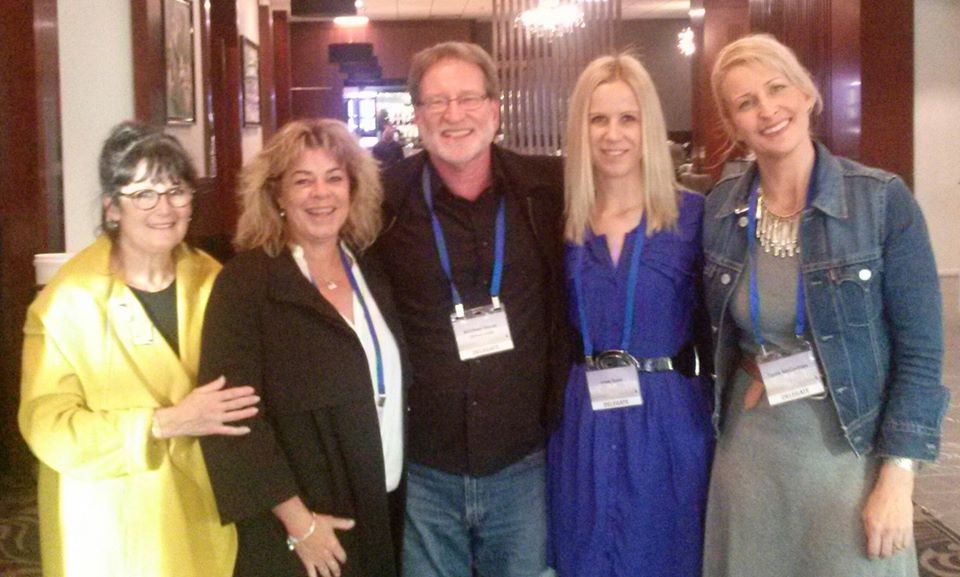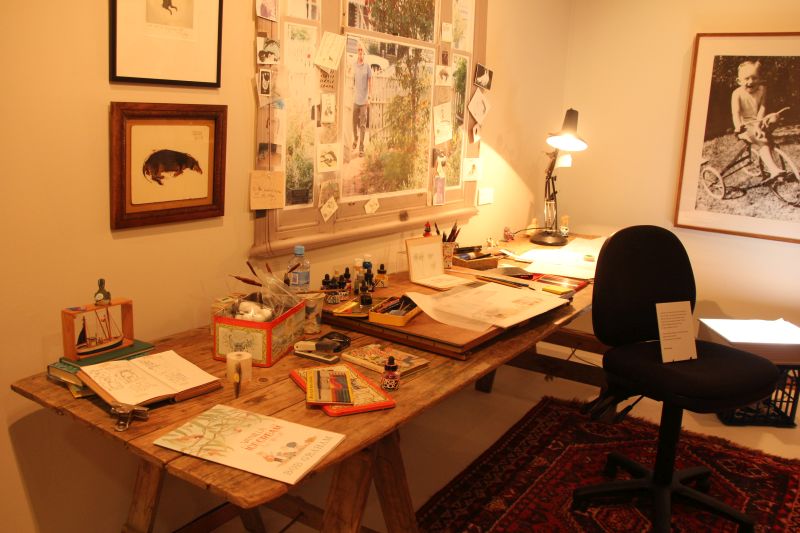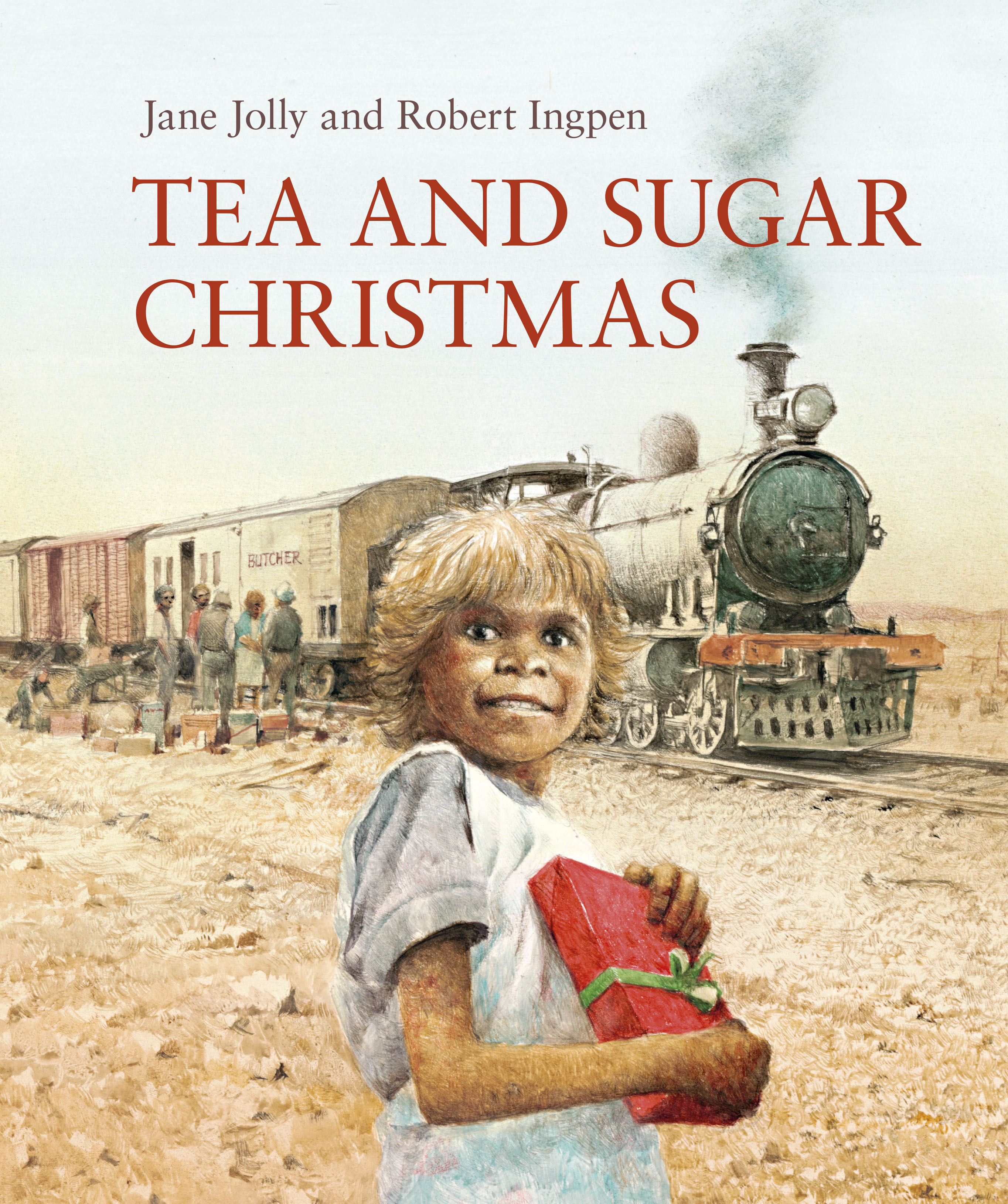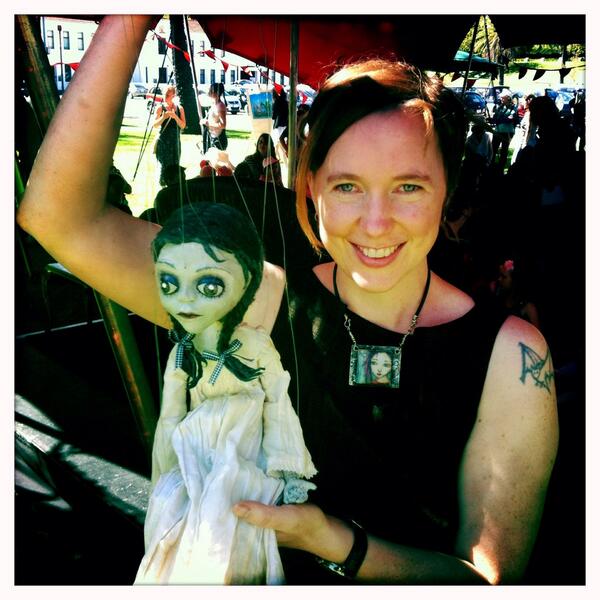TREASURES AT THE CBCA CONFERENCE
Last weekend at the CBCA Conference was one of the most wonderful experiences I have had yet as a writer. I met old friends and new, had wonderful conversations with intelligent, creative people, ate dinner in the War Memorial under the fighter planes, met so many inspiring teacher librarians passionate about reading, drank lots of bad coffee, was part of the ‘Local Treasures’ panel where we spoke about the crazy juggling act of being both a writer and a mother (more on that in another post), and laughed and laughed and laughed. I’m still trying to process everything that happened and have no idea how to capture it all in just one short post. So I thought that I would pick out some of the featured authors and share a few of my favourite books.

I have to start with Glenda Millard because I was a little star struck meeting her. In person she was beautiful — gently spoken, dressed in bold colours. Two of her picture books in particular have been treasured favourites in our house — Heart of the Tiger, which always makes me want to weep, and Kaito’s Cloth which was Miss Ten’s favourite book for the longest time and still sits on her bookshelf despite the fact that she says she is far too old for picture books. Kaito’s Cloth was also important to me after I was told by both a publisher and an agent that they couldn’t sell Megumi and the Bear ‘because of its snowy setting’. At the time we were reading Kaito’s Cloth daily; it has snow on every page. If Glenda can do it, I thought, so can I. Thankfully the incomparable Walker Books agreed. I was too shy to tell Glenda how much she has inspired me at the conference, but maybe next time.
Read More »TREASURES AT THE CBCA CONFERENCE
During one plenary session Glenda and Stephen Michael King spoke about their collaborative process. I adore Stephen’s work — seriously ADORE! — and they clearly have a very special relationship. Glenda explained how when she is writing a book and thinking about the illustrations she has ‘no idea what I’m desiring, I just know that they’re Stephen’s’. Their latest picture book, The Duck and the Darklings, is extraordinary — for adults as much as children.
I missed most of Libby Gleeson and Freya Blackwood talking about their process because I was doing post-panel stuff (signing books, etc), but I adore their work, separately and together. I recently went to a workshop with Libby and she handed us all a copy of her first picture book, One Sunday. Master Two has been inseparable from it ever since. Even if we are just driving five minutes to pick up the older kids from school, One Sunday has to come. We almost left it at a café and it just missed being dropped into a puddle. Thankfully it has survived, unscarred, and is read daily.
For Freya my pick is going to be The Terrible Suitcase. All her illustrations are to-die-for but this is Emma Allen’s (incredible) debut book and I met Emma for the first time this weekend, having no idea that she was a local girl. Like me she has young children and is juggling lots of balls. I can’t wait to see what she creates next.
Julie Vivas spoke candidly about developing her illustrations and about how she is ‘always disappointed in herself’ when she finishes a book because she can see where she could have done better. Freya Blackwood related, revealing that she thinks some of her books are terrible and she’s glad people haven’t noticed. I can’t imagine which books Freya could possibly consider terrible, but I understand the mindset, as I’m sure all creative people do. Freya believes she has only created one perfect book, Amy and Louis (with Libby Gleeson). Vivas named Possum Magic as her most successful achievement.

I’m not going to pick one Bob Graham book (a seriously impossible task) but instead encourage you to go to a mind-blowing retrospective of his work at CMaG. The conference crew went along to opening night and I’m going to go again with my kids. The exhibition is on until August and I would encourage you all to visit. I particularly loved the recreation of Bob’s working space, complete with paints, pencils and post-it notes.
 Illustrator of over 100 books, Robert Ingpen was scheduled to appear at the conference but sadly had to cancel. Nevertheless his latest with author Jane Jolly, Tea and Sugar Christmas, was launched there. It is such an evocative book that I had the good fortune to edit. The story is woven around the train that serviced settlements along the Nullarbor Plain during the 1900s, and has a young Indigenous girl, Kathleen, as the main protagonist — such a rarity. Jane got a shock when she first saw Robert’s illustrations. Without knowing it, he had drawn a girl who looked exactly like a student Jane once taught. The launch itself held another surprise when author Phil Cummings — a long-time friend of Jane’s — announced that his brother used to drive the Tea and Sugar train and one of his mates handed out the tea and sugar. Phil had never previously thought to mention this to Jane!
Illustrator of over 100 books, Robert Ingpen was scheduled to appear at the conference but sadly had to cancel. Nevertheless his latest with author Jane Jolly, Tea and Sugar Christmas, was launched there. It is such an evocative book that I had the good fortune to edit. The story is woven around the train that serviced settlements along the Nullarbor Plain during the 1900s, and has a young Indigenous girl, Kathleen, as the main protagonist — such a rarity. Jane got a shock when she first saw Robert’s illustrations. Without knowing it, he had drawn a girl who looked exactly like a student Jane once taught. The launch itself held another surprise when author Phil Cummings — a long-time friend of Jane’s — announced that his brother used to drive the Tea and Sugar train and one of his mates handed out the tea and sugar. Phil had never previously thought to mention this to Jane!
In a funny way Kathleen leads me to Nadia Wheatley’s My Place, which at the time of its release was seen as a radical book. It is now a school staple, but during the 1988 bicentennial—when we were celebrating an invasion — Nadia’s book was seen to be unAustralian. The depiction of migrants and Indigenous people in picture books was controversial.

In fact, My Place won one award under a category for ‘migrants, Aborigines and girls’ which was designed to encourage the publication of these neglected subjects. On hearing this news the audience collectively gasped, and yet the reality is that these three categories are still underrepresented, even that of girls because the accepted view is that boys won’t read books about girls. We still have a long way to go.
Michael Gerard Bauer is beloved by Master Seven. When he found out that I had met Michael he immediately sat down and wrote him a card (complete with illustrations). I was given strict instructions to deliver it the following day. Michael subsequently wrote Master Seven some lovely messages on one of his Eric Vale books and a laminated cover proof of the next yet-to-be-released Secret Agent Derek ‘Danger’ Dale book. Needless to say Master Seven was beside himself. He spent the evening copying the cover and then, in the absence of Michael’s story, wrote his own!
Another of Master Seven’s idols, Andy Griffiths presented on humour in children’s books and how adults often don’t ‘get’ the things kids find funny. By way of example he mentioned Barky the Barking Dog from the treehouse books. All three of my kids think Barky is utterly hilarious and having just been to the 13 Storey Treehouse at the Playhouse, that very night they were telling my parents all about Barky. As if to prove Andy’s point, my dad was utterly baffled: ‘Why is this funny?’ and yet my three kids (aged three to ten) kept dissolving into fits of giggles trying to explain what Barky does (barks at things, of course). The treehouse series has captivated kids everywhere, and we are counting down until 52 Storey comes out.
 I’m going to finish with one of my favourite people who I finally got to meet, Choechoe Brereton. Choe was one of 22 authors in an anthology of miscarriage stories that I edited, The Sound of Silence (2011). We’ve been emailing ever since and her debut picture book, A House for Donfinkle (coincidentally published by Walker Books, so we are now publishing house buddies) was launched at the conference. Choe is a gorgeous person and this is a gorgeous book illustrated by Wayne Harris. Do yourself a favour and check it out.
I’m going to finish with one of my favourite people who I finally got to meet, Choechoe Brereton. Choe was one of 22 authors in an anthology of miscarriage stories that I edited, The Sound of Silence (2011). We’ve been emailing ever since and her debut picture book, A House for Donfinkle (coincidentally published by Walker Books, so we are now publishing house buddies) was launched at the conference. Choe is a gorgeous person and this is a gorgeous book illustrated by Wayne Harris. Do yourself a favour and check it out.
I haven’t even mentioned Jackie French, Morris Gleitzman, Barry Jonsberg, Brownyn Bancroft, Belinda Murrell, Sally Murphy or my panel posse (Tania McCartney, Tracey Hawkins and Stephanie Owen Reader) to name just a few of our most glittering treasures, but here I must end (for now — ramblings on our Motherhood and Mayhem session to come). In short, it was a glorious weekend and massive congratulations must go to the team who pulled together such an inspiring event.


